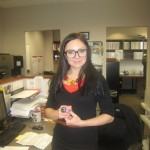Due to the fact that the purchasing power has decreased significantly, a competent storefront design will help improve demand. Why? Because a bright shop window will attract attention and invite the buyer to a boutique or store. Competent merchandising inside the store will increase sales. Once having bought something in the store, the buyer will return there for new things. It depends not only on the seller's professionalism, discounts, and gifts but also on the design of storefronts.
What does the storefront do?
The storefront shows how to combine things. This is what makes people go to the store and look for the very things that are shown in the storefront. Therefore, these items are sold faster than others. If you want to increase sales, make an interesting showcase that will not only reflect the fashion trends of the season and the collection but also please your target audience.
Prepare several sets of goods for the storefront. Even if the window design remains the same, people often buy exactly those things that they see in the front shop window. It is important to have several options.
The inside of your store also matters
Visual order is always in trend. This means that things inside the store are arranged by color. For example, pastel shades are on the right and dark ones are on the left. Clothes for every day and for the evening are in different corners. Products made from white metal are in one display case and from yellow metal are in another one. If there is no visual order, it is very difficult for the customer to navigate and make purchases inside the store.
Be sure to think about the hanging and layout of the things within the store. It will help to increase sales. For example, if customers are looking for pants, you simply lead them to the shelf where the pants are located. Think up several options for hanging up. If you change the displayed pants once a month or week, this will help the store to look different every time a customer visits despite the fact that there is no collection update.
How does store design affect customer perception?
Today the market is a battleground for the consciousness of the consumer. To increase sales and attract the attention of the buyer, marketers are trying to influence the basic instincts of a person. The key to success is the activation of emotions through auditory, visual and tactile perception.
One of the topics popular among marketers is the effect of color on the customer. Red color has a strong effect on a person. It quickly reaches the area of the brain, which plays an important role in the regulation of such functions as memory and emotional state. Contrast is also a very effective technique in neuromarketing. Against the general background of the color uniformity of boutique signboards, another color attracts special attention.
It is also worth remembering that a person cannot see all the goods at the storefront equally. The central position at eye level (usually oriented towards the average height of a person) is considered to be the most successful.
You can increase the number of the same products in order to highlight them in the surrounding background. You do not need to demonstrate the entire range. The quantity should not exceed 4-5 kinds. The golden rule “less is more” guides successful stores not only in the design of the storefront but also in the sales halls.
The lighting is also important
You should correctly adjust the lighting to make the product more noticeable. It is worth to take into account not only the color gamut of your display but also the brightness and the hue of the spotlight. The light can both emphasize and kill the attractiveness of the product.
You should also take into account the time of day and adjust the lighting in the store based on it. In the morning a person feels nicer in a room with white light. In the evening it is better to adjust the lighting taking into account the emotional state of the visitor. A soft and yellowish tint that resembles the noonday sun is more preferable.






Comments